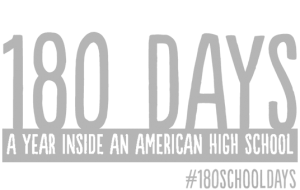In this class you will be asked to write 3 movie response papers. The following films will be the focus of these papers:
 From the website… For decades, standardized testing has been a part of public education. Within the last ten years, however, the testing has taken on a more important, and possibly more damaging, role. Test scores, mistakenly viewed as effective assessments of student ability and teacher/school effectiveness, are anything but. This film sheds light on the invalid nature of these tests, the terrible consequences of high-stakes testing, and the big money that’s involved.
From the website… For decades, standardized testing has been a part of public education. Within the last ten years, however, the testing has taken on a more important, and possibly more damaging, role. Test scores, mistakenly viewed as effective assessments of student ability and teacher/school effectiveness, are anything but. This film sheds light on the invalid nature of these tests, the terrible consequences of high-stakes testing, and the big money that’s involved.
From the website… This special gives space and breadth to our nation’s education reform debate by giving the audience a first-hand view of what happens in a school that meets the needs of the most challenged students in new and sometimes non-traditional ways.
From the website … FRONTLINE correspondent John Merrow was granted unprecedented access to Michelle Rhee, former chancellor of the Washington, D.C. public schools as she attempted to fix a broken school system.
From the webstie… For a nation that proudly declared it would leave no child behind, America continues to do so at alarming rates. Despite increased spending and politicians’ promises, our buckling public-education system, once the best in the world, routinely forsakes the education of millions of children. Oscar®-winning filmmaker Davis Guggenheim (An Inconvenient Truth) reminds us that education “statistics” have names: Anthony, Francisco, Bianca, Daisy, and Emily, whose stories make up the engrossing foundation of Waiting for “Superman.”
(Clicking on the images above will bring you to a page with links to more information about each film.)
We will watch some of these films together as a groups, but you will be expected to watch some of these on your own. For each film you will need to write a 4-5 page APA style response paper. Guidelines for theses papers are included below. Due dates for the papers are noted in the syllabus. The rubric used to evaluate the papers is included at the link below.
Response Paper Assignment (3 response papers, 4-5 pages each, APA style)
In this response paper, I am asking for more than just your personal thoughts and reflections on the film (though these will also be part of the final project). What I am really looking for is for you to take part in the ongoing conversation about school reform of which the film is a part. This means you have some work to do to contextualize your comments and to extend the conversation. The following are the required elements of your response paper.
Part I: Summary
Begin your reflection by summarizing the main points of the film. Overall, what does the film say about public education? About school reform? In crafting this summary try not to include your own opinion or views (this will come later). Work to make sure that your summary has coherence – the goal is not to recap the entire film but to focus on its core elements.
Part II: Contextual Analysis
Once you have summarized the central issues raised by the film, it is time to place these issues within the broader conversation now taking place about school reform. For example, does the film reinforce or contradict the perspectives of the authors we have read in class? Don’t try to work with all of the course readings but select 3 or 4 with varied or conflicting perspectives that you believe are the most pertinent. Try to compare and contrast the ideas of these authors and the relationship of their ideas to those presented in the film. In this section you will need to quote a paraphrase the work of these authors to illustrate the points that you are trying to make.
Part III: So What?
In this final part of the paper, try to give the reader something to take away from the conversation above. In other words, now help the reader to interpret the film in light of the issues you have raised. Is the film accurate in its depictions? Does the film exaggerate? What issues are ignored or focused on too much? What does the film do for school reform? For charter schools? For public education? Are the potential outcomes helpful or problematic, and why?
Your conclusions will clearly be linked to your opinions, but rather than just being your thoughts and reactions to the film, you should now have a well-developed argument that summarizes, analyzes, and evaluates the film for the reader.


